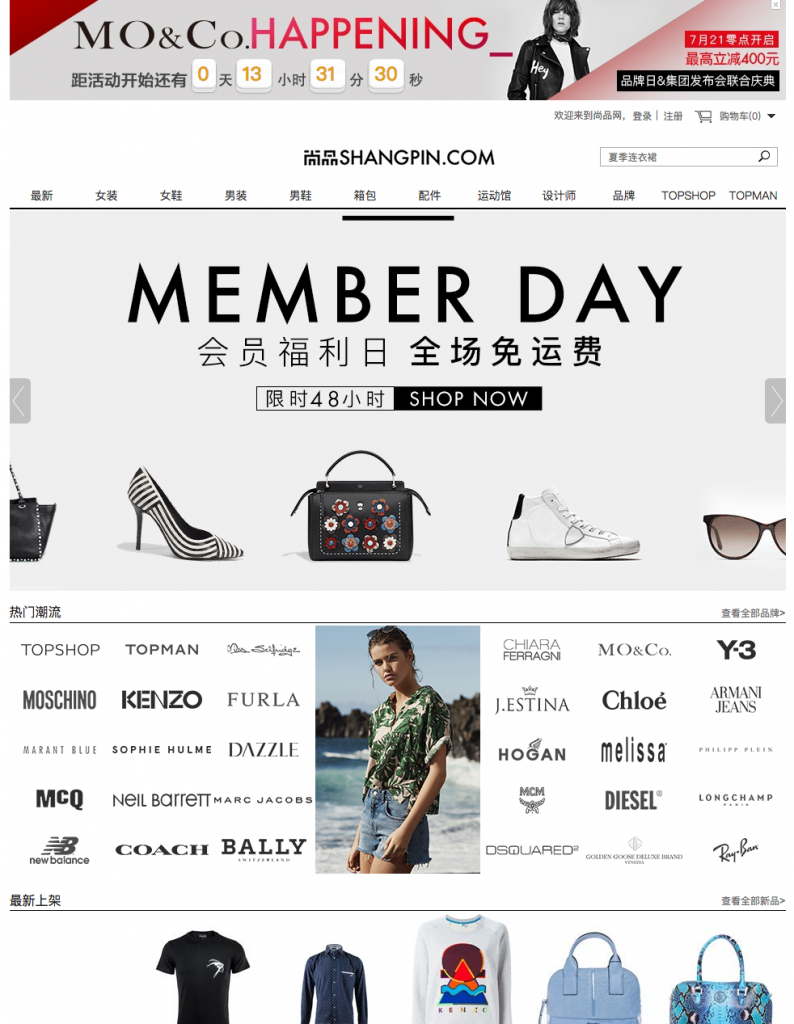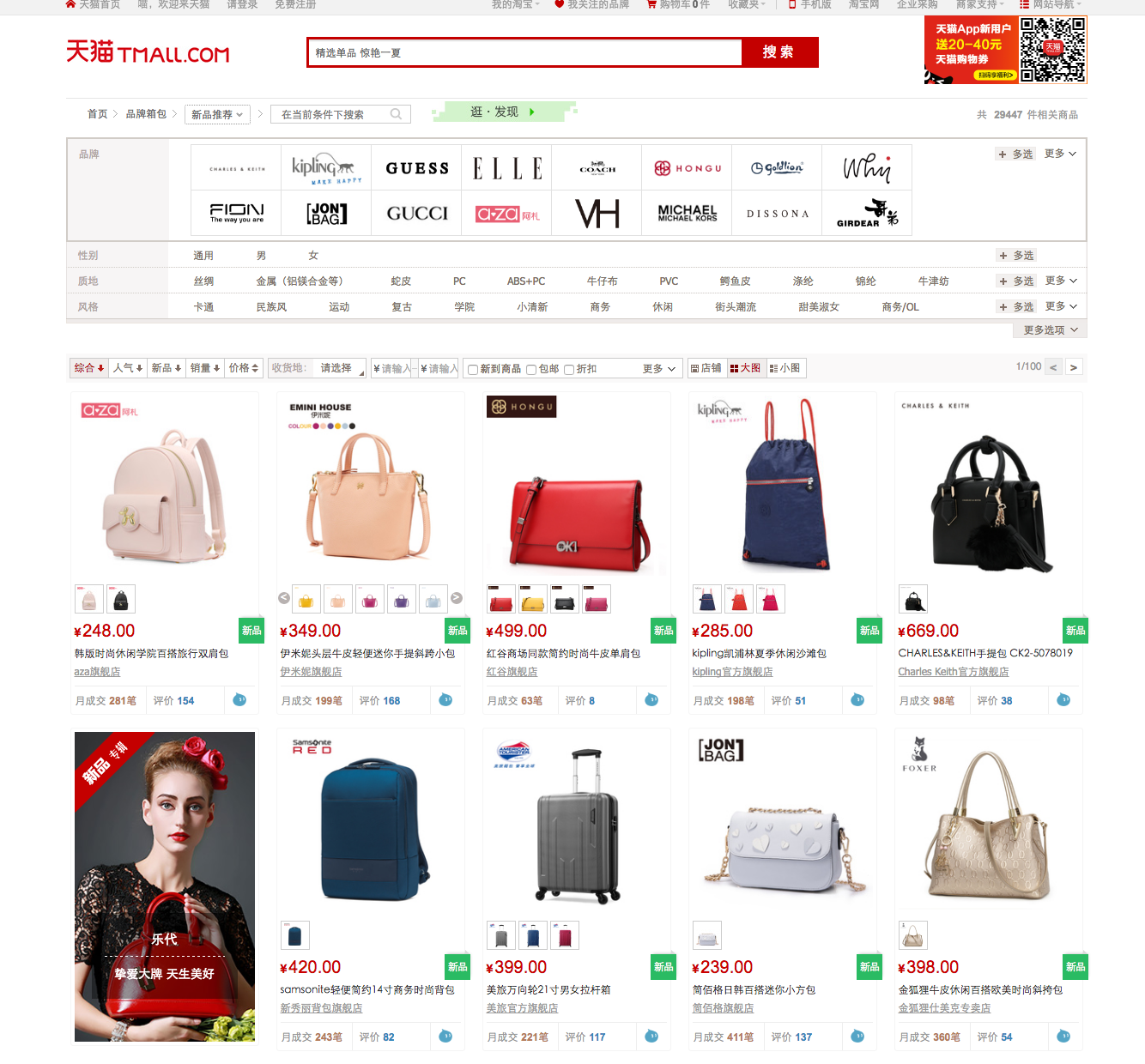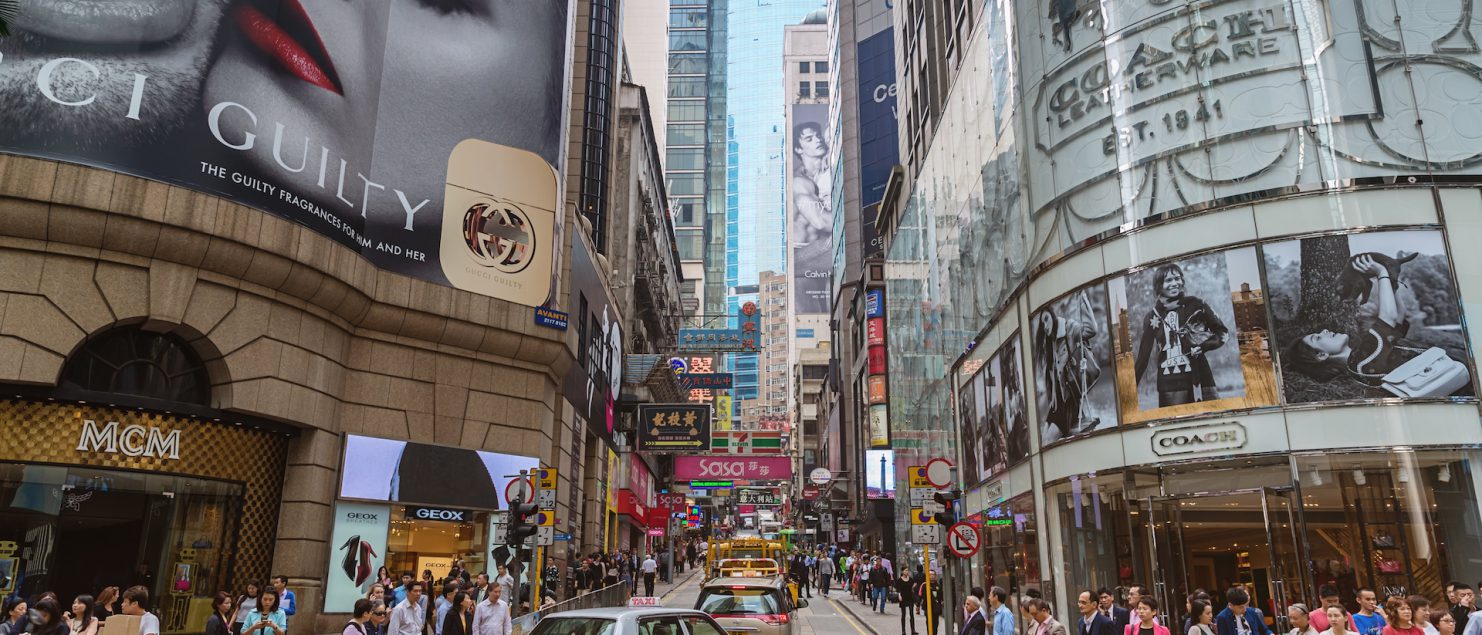The Similarities and Differences between Chinese and Western Fashion e-Commerce Markets
Many foreign companies with an interest in China as well as its own domestic companies have begun to invest in e-commerce to increase profits over their “bricks and mortar” businesses within the country. Achievements from Taobao, Jingdong and other e-commerce sites have gone a long way to convince generally conservative Chinese consumers to be more accepting of online shopping.
Taking into consideration China’s huge population, e-commerce offers a great deal of opportunity there, especially as domestic and foreign development for the state that has the world’s largest population is continually bringing increased income to many Chinese families.
The Retail industry in China, that has the fourth-largest territory in the world, is less developed in comparison to its Western counterparts and there are variances within that development between different Chinese regions – between urban and rural areas particularly as one would expect. These factors come together to mean that e-commerce can make meeting the needs of Chinese customers a more ready proposition, and the fashion industry is no exception.
The Internet has always offered consumers an opportunity to engage with an increasing wealth of fashion-related information that has, in turn, increased the desired consumption of fashion-related products in China. As a consequence, this has meant that Bricks and Mortar fashion retail has found it challenging to keep up with the rapid pace of fashion design changes.
Being no different in approach to Western fashion e-commerce markets, China’s fashion industry constantly seeks to develop a wider range of channels, to reach more consumers, to stimulate consumption, and to create more profit. Looking at some e-commerce sites that market fashion products, the likes of Taobao, Tianmao (Taobao’s sub-branch), Jumei Youpin, Shangpin, and so on, they are all exploring new online shopping experiences, to promote mass consumption and to enhance their brand to reach out to more potential customers.

Taking the same approach as Western fashion e-commerce enterprises, traditional advertising, online advertising, holiday promotions, and limited consumption are all established methods to improve business.
However, unlike Western fashion online markets, most of China’s fashion sales are attached to an inclusive platform.
However, unlike Western fashion online markets, most of China’s fashion e-commerce sales are attached to an “inclusive platform”, one that sells a host of other goods like a department store. Furthermore, that China’s online shopping is mostly focused on medium- and low-end merchandise.
In Western countries, the vast majority of well-known fashion brands have their own electronic business platforms, which is the brand’s official website. Their consumers, most of the time, visit the official websites to purchase products based on their brand preferences. Although there are some brand-gathering platforms that are also very popular such as Macy’s and Barneys, the brand’s official websites, especially for those well-known brands like Nike or American Apparel, bring in most of the online businesses. In China, things are different. On the one hand, this is in part because of the lack of prevalence of domestic luxury and light luxury brands. Local brands of China are mostly mid-range brands, and they are more focused on traditional retail. Whereas, on the other hand, not all national well-known brands have their online services in China. Because Chinese e-commerce is still developing, public acceptance of online shopping is still at the mid-level, and the trustworthiness of online shopping has been a concern of Chinese consumers.
According to KPMG’s research, the current value that consumers feel comfortable shopping online is less than 4200RMB, equivalent to about 630 USD. In 2014, it was less than 1,200 RMB, 170 USD. So to remedy this in order to reduce risk and gain better access to Chinese fashion online markets, most international brands have chosen a well-known Chinese e-commerce platform with proven products of various brands to find a ‘stall’. This is the same even for local Chinese brands that do not have strong competition. They also find the better strategy is to choose to find a place within a large and accepted e-commerce platform. It’s for this reason that e-commerce sites like Tianmao, Weipinhui and Shangpin have become the mainstays of online fashion markets in China.
Lastly, one of the peculiarities in China fashion online market is of products w ith a low price. Because of the unique advantages of the Chinese labour force and the expanse of the textile industry, there are many products of very low price and without any brand effect. Taobao provides a perfect marketplace for those products. You can easily find a wide offering of clothes and accessories with prices around 50-100 RMB (7-15 USD). China’s low logistics prices have also contributed to the development of such cheap products.

The characteristics of Chinese e-commerce will continue to develop in the future to establish a qualitiative rival on parity with international standards
Conclusion
China’s e-commerce is still growing at a rapid rate as the latest KPMG China report – China’s Connected Consumers – reflects. It is estimated that there are 300 million Chinese in the mainland keen on online shopping. As China’s economy continues to advance, online shopping will continue to grow. Alibaba said that in the 12 months ended in March 2016, including all their websites, there were more than 250 million buyers that made one or multiple transactions. The characteristics of Chinese e-commerce will continue to develop in the future to establish a qualitative rival on parity with international standards and that may well, like Alibaba become a destination for international fashion shoppers wishing to take advantage of the discounted pricing achievable with China’s unique business advantages.

